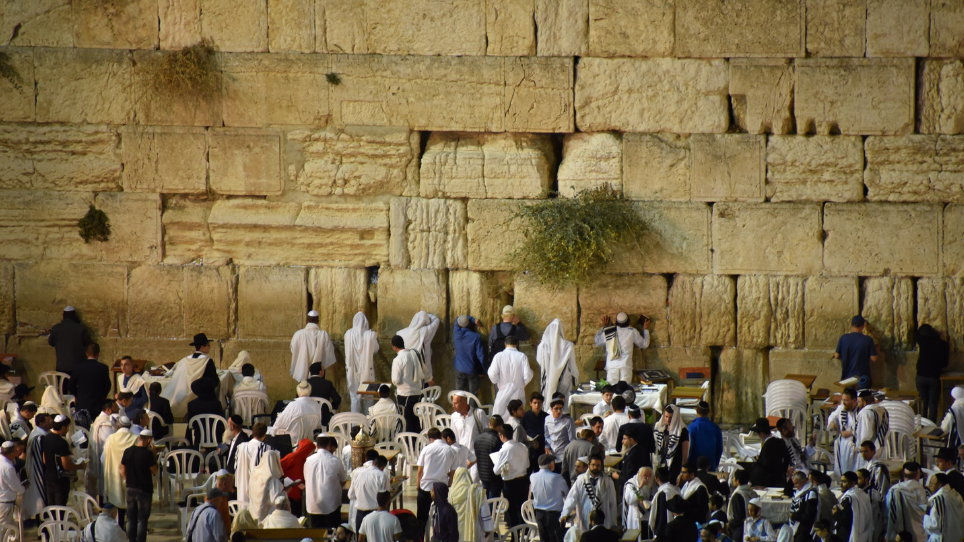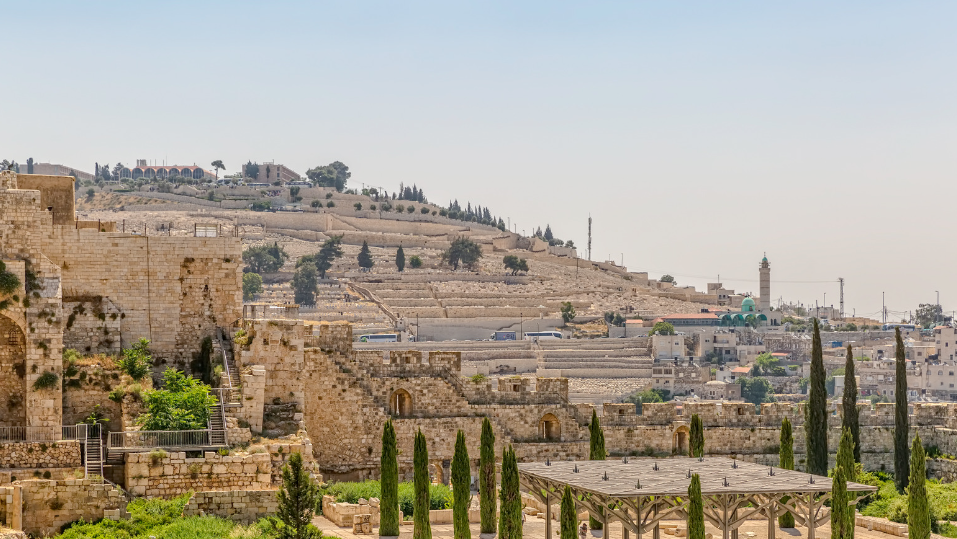Jerusalem Tourist Places: A Comprehensive Guide to the City’s Attractions

[ez-toc]
Jerusalem, a city of profound historical, religious, and cultural significance, stands as a testament to millennia of human civilization. Its ancient streets and iconic landmarks draw millions of visitors each year, eager to experience its rich tapestry of history and spirituality. This guide delves into the ultimate destinations of Jerusalem tourist places, encompassing a diverse array of attractions that cater to all interests.
The Old City
The Old City of Jerusalem is a labyrinthine area that holds immense historical and spiritual significance. Enclosed by ancient walls, it is divided into four quarters: the Jewish, Christian, Muslim, and Armenian quarters. Each of these quarters offers a unique glimpse into Jerusalem’s multifaceted heritage. This is the ultimate of Jerusalem tourist places.
Western Wall: The Western Wall, also known as the Kotel, is arguably one of the most iconic sites in Jerusalem. It is the last remnant of the Second Temple, which was destroyed by the Romans in 70 CE. The wall is a focal point for Jewish prayer and pilgrimage. Visitors can observe individuals inserting written prayers into the wall’s cracks, a tradition that symbolizes their hopes and wishes. The area in front of the wall is often bustling with activity, from religious ceremonies to casual visitors seeking a moment of reflection.
Church of the Holy Sepulchre: This church, located in the Christian Quarter, is a central pilgrimage site for many Christians. Believed to be the site of Jesus Christ’s crucifixion, burial, and resurrection, the church houses several important chapels, including the Edicule, which is said to mark the location of Jesus' tomb. The complex is a focal point of the Christian faith and attracts visitors from around the globe. The church’s interior, with its ornate decorations and the crowds of worshippers, provides a deeply moving experience.
Dome of the Rock: An architectural marvel, the Dome of the Rock stands on the Temple Mount and is one of the most recognizable symbols of Jerusalem. This Islamic shrine, completed in 691 CE, is renowned for its stunning golden dome and intricate tile work. It is considered one of the holiest sites in Islam, believed to be the location of the Prophet Muhammad’s night journey and ascension to heaven. While non-Muslims are not permitted to enter the dome itself, they can admire its beauty from the surrounding Temple Mount area.
Al-Aqsa Mosque: Situated on the Temple Mount, the Al-Aqsa Mosque is one of the oldest and most significant mosques in the Islamic world. It is an important site for Muslim prayer and worship. The mosque's vast courtyard, with its impressive architecture and historical significance, provides a serene atmosphere for reflection. Access to the mosque may be restricted for non-Muslims, so it’s advisable to check visiting hours and guidelines beforehand.
Yad Vashem
Yad Vashem is Israel’s official memorial to the six million Jewish victims of the Holocaust. Located on Mount Herzl, the complex includes a range of museums, memorials, and educational centers. The main museum offers a comprehensive account of the Holocaust through photographs, documents, and personal testimonies. The Hall of Names is a somber and profound space dedicated to preserving the identities of Holocaust victims. The Children’s Memorial, with its hauntingly beautiful design, commemorates the one-and-a-half million Jewish children who perished during the Holocaust.
The Israel Museum
The Israel Museum, located in Givat Ram, is one of the world’s leading art and archaeology museums. It houses an extensive collection of artifacts from ancient times to the present. One of its most renowned exhibits is the Shrine of the Book, which displays the Dead Sea Scrolls—ancient manuscripts that include some of the earliest known texts of the Hebrew Bible. The museum also features a large-scale model of Jerusalem from the Second Temple period, offering a vivid depiction of the city as it appeared over two thousand years ago. Additionally, the museum's art collections include works by both Israeli and international artists.
Mount of Olives
The Mount of Olives, located east of the Old City, offers panoramic views of Jerusalem and is steeped in religious significance. It is a key site in both Jewish and Christian traditions. The Mount is home to several important sites, including the Church of All Nations, which commemorates the spot where Jesus is believed to have prayed before his crucifixion. The nearby Jewish cemetery is one of the oldest and most prominent burial sites in the world, with graves of significant historical figures. Visitors can also explore the Pater Noster Church, where it is believed Jesus taught the Lord’s Prayer.

Mahane Yehuda Market
For a taste of local flavor, Mahane Yehuda Market is a vibrant destination and one of the Jerusalem tourist places you won’t want to miss. This bustling market is a feast for the senses, with its array of fresh produce, spices, pastries, and street food. It provides a lively atmosphere where visitors can immerse themselves in the local culture. During the day, the market is filled with shoppers and vendors, while in the evening, it transforms into a vibrant nightlife scene with numerous bars and eateries offering a diverse range of cuisines.
The Knesset
The Knesset, Israel’s parliament building, offers guided tours that provide insight into Israeli politics and the country’s democratic processes. The tour includes a visit to the Knesset Hall, where legislative sessions are held, and an overview of the building’s architecture and history. The Menorah sculpture outside the Knesset, which features symbolic depictions of Jewish history, is also a notable feature.
Ein Kerem
Ein Kerem is a charming village located on the western outskirts of Jerusalem. Known for its picturesque streets and artistic atmosphere, it is a serene escape from the city’s hustle and bustle. The village is significant in Christian tradition as the birthplace of John the Baptist. Key sites include the Church of the Visitation, which commemorates the visit of the Virgin Mary to Elizabeth, and several art galleries and craft shops. Ein Kerem is also home to several quaint cafes and restaurants that offer local and international cuisine.
Mount Zion
Mount Zion, situated just outside the Old City walls, is an area of great historical and religious importance. The Room of the Last Supper, also known as the Cenacle, is believed to be the location where Jesus shared his final meal with his disciples before his crucifixion. Nearby, the Dormition Abbey commemorates the Assumption of the Virgin Mary and offers stunning views of the city. The area is also home to the traditional site of King David’s Tomb, an important site in Jewish tradition.
The City of David
The City of David, located just south of the Old City, is an archaeological site that offers insights into Jerusalem’s ancient history. Believed to be the original core of ancient Jerusalem, the site includes the Hezekiah’s Tunnel, an impressive water channel built during the reign of King Hezekiah. The Pool of Siloam, used for ritual purification, is another significant feature. Guided tours of the City of David provide a fascinating look into the city’s ancient past and its development over millennia.
Botanical Gardens
Jerusalem’s Botanical Gardens, located in the Givat Ram area, provide a peaceful retreat from the city’s urban environment. The gardens feature a diverse collection of plants from Israel and the Mediterranean region, including both native and exotic species. Visitors can explore thematic sections of the garden, such as the biblical plants garden and the Mediterranean garden. The gardens also host educational programs, workshops, and events, making it a valuable resource for learning about plant life and conservation.
The Tower of David Museum
The Tower of David Museum, located near the Jaffa Gate, is set within the ancient citadel of Jerusalem. The museum offers a comprehensive overview of Jerusalem’s history through its exhibitions and the citadel’s historic structures. Visitors can explore the ramparts for panoramic views of the city and enjoy interactive displays that bring Jerusalem’s past to life. The museum’s location, atop a hill with commanding views, adds to its historical ambiance.
Jerusalem Archaeological Park
Adjacent to the Western Wall, the Jerusalem Archaeological Park showcases significant archaeological findings from the Second Temple period. The park includes the remains of the Southern Wall, which was part of the grand enclosure surrounding the Temple Mount. Visitors can walk through ancient streets and explore the remains of structures that were once part of the bustling city of Jerusalem. The park provides valuable insights into the city’s history and its development during the time of the Second Temple.
Jerusalem is a city where ancient history, religious tradition, and vibrant modern life intersect. Each of these attractions offers a unique window into the city’s rich past and present, making Jerusalem a destination that promises an unforgettable experience for every traveler. Whether you’re drawn by its spiritual significance, its historical depth, or its vibrant cultural scene, Jerusalem has something to offer everyone who walks its storied streets.













